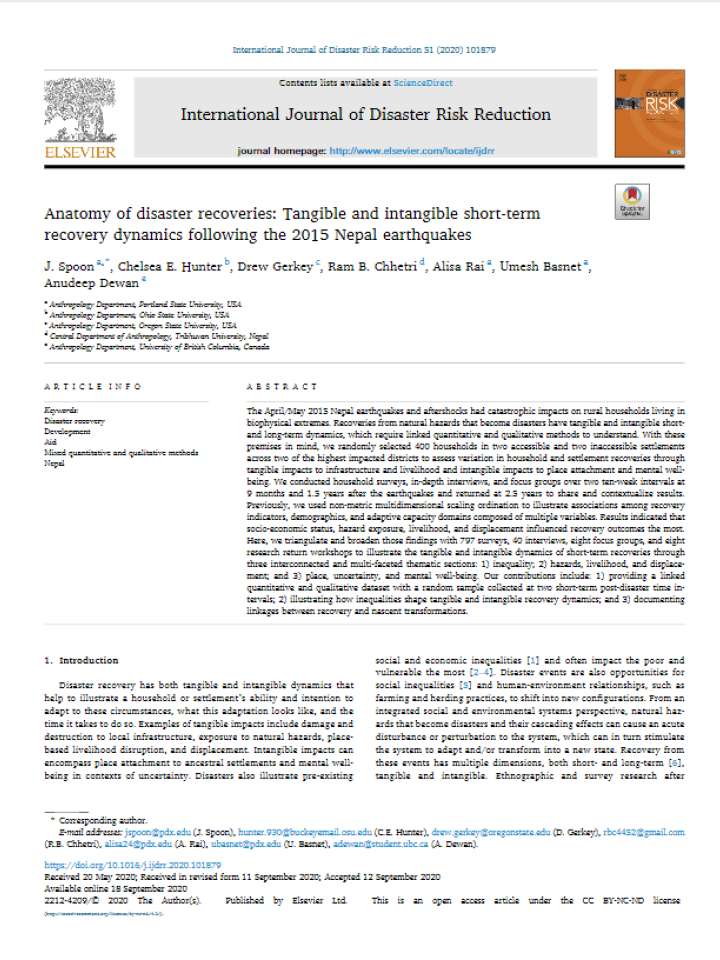Anatomy of disaster recoveries: Tangible and intangible short-term recovery dynamics following the 2015 Nepal earthquakes
The April/May 2015 Nepal earthquakes and aftershocks had catastrophic impacts on rural households living in biophysical extremes. Recoveries from natural hazards that become disasters have tangible and intangible short- and long-term dynamics, which require linked quantitative and qualitative methods to understand. With these premises in mind, we randomly selected 400 households in two accessible and two inaccessible settlements across two of the highest impacted districts to assess variation in household and settlement recoveries through tangible impacts to infrastructure and livelihood and intangible impacts to place attachment and mental well-being. We conducted household surveys, in-depth interviews, and focus groups over two ten-week intervals at 9 months and 1.5 years after the earthquakes and returned at 2.5 years to share and contextualize results. Previously, we used non-metric multidimensional scaling ordination to illustrate associations among recovery indicators, demographics, and adaptive capacity domains composed of multiple variables. Results indicated that socio-economic status, hazard exposure, livelihood, and displacement influenced recovery outcomes the most. Here, we triangulate and broaden those findings with 797 surveys, 40 interviews, eight focus groups, and eight research return workshops to illustrate the tangible and intangible dynamics of short-term recoveries through three interconnected and multi-faceted thematic sections: 1) inequality; 2) hazards, livelihood, and displacement; and 3) place, uncertainty, and mental well-being. Our contributions include: 1) providing a linked quantitative and qualitative dataset with a random sample collected at two short-term post-disaster time intervals; 2) illustrating how inequalities shape tangible and intangible recovery dynamics, and 3) documenting linkages between recovery and nascent transformations.
Highlights
-
Complementary methods show tangible and intangible disaster recovery dynamics.
-
Post-disaster inequality evident through structural violence and spatial dynamics.
-
Poorest experienced hazard exposure, livelihood disruption, and displacement.
-
Place attachment, uncertainty, and mental well-being interrelate for most marginal.
-
Recovery dynamics may illustrate nascent household and settlement transformations.
Explore further
